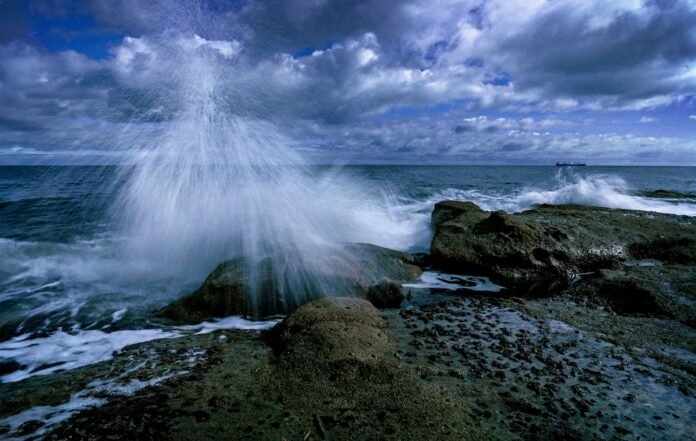Fixative sprays are essential tools for artists, crafters, and DIY enthusiasts alike. These sprays help preserve artwork, reduce smudging, and protect delicate creations from the effects of time, moisture, and dust. But with so many options available, understanding which fixative spray to use and how to apply it can be overwhelming. In this guide, we’ll explore the ins and outs of fixative spray, including its uses, types, and practical tips for achieving the best results.
What is Fixative Spray?
Fixative spray is a transparent, protective coating applied to artworks, particularly those made with dry mediums like charcoal, pastel, graphite, and chalk. By forming a protective layer, it prevents smudging and fading, helping to extend the lifespan of the artwork. Fixative sprays are also popular for sealing projects created with watercolor, ink, or acrylic paint, although these often require specific types of fixatives.
There are two main types of fixative sprays:
- Workable Fixatives – Allows for additional layers of media after spraying.
- Final Fixatives – Creates a permanent finish, usually applied as the last step.
Each of these types has specific applications, so let’s explore these in more detail.
Types of Fixative Spray
Fixative sprays are categorized into two broad types, each with its unique properties and uses:
- Workable Fixatives
Workable fixative sprays are designed to allow artists to continue adding layers of charcoal, pastel, or other dry media after the spray has dried. These fixatives temporarily bind the pigments to the surface, reducing smudging but allowing further alterations. Workable fixatives are ideal for:
- Layering: If you’re working with multiple layers of charcoal or pastel, a workable fixative helps secure earlier layers, preventing them from blending unintentionally with newer layers.
- Erasing and Adjusting: Since the spray doesn’t make the artwork fully permanent, you can still erase parts and make adjustments to your design after application.
- Final Fixatives
Final fixative sprays create a permanent finish, protecting the artwork from smudges, dust, and UV light. They’re usually applied after the artist has completed all layers of the artwork and is satisfied with the result. Final fixatives are beneficial because:
- Long-Term Protection: They add a protective coat that shields the artwork from environmental factors like light and dust.
- Fade Resistance: Many final fixatives include UV protection, which helps prevent fading caused by sunlight exposure.

Choosing the Right Fixative Spray
Selecting the right fixative spray depends on your medium, project, and how much permanence you need. Here’s a breakdown of the most common fixatives for different types of media:
- Charcoal and Pastel: For charcoal and pastel artworks, a workable fixative is ideal for intermediate stages, followed by a final fixative for long-term preservation.
- Graphite and Pencil: Graphite is less prone to smudging, but a workable fixative is still helpful when layering. A final fixative is useful for highly detailed or shaded pencil drawings.
- Watercolor and Ink: Watercolor and ink are sensitive to water-based fixatives. For these, look for a fixative labeled for mixed media or specifically for watercolor.
- Acrylic and Oil Paints: While fixative spray isn’t usually necessary for acrylic or oil paintings, some artists use a final fixative or varnish to add a glossy finish and protect from UV light.
Step-by-Step Guide to Applying Fixative Spray
Applying fixative spray might seem simple, but there are best practices to ensure a smooth, even application that enhances your artwork. Here’s a step-by-step guide:
Step 1: Prepare Your Workspace
- Choose a Well-Ventilated Area: Fixative sprays can produce strong fumes, so work in a well-ventilated space, ideally outdoors or in a room with open windows.
- Protect Surfaces: Lay down a drop cloth or newspaper to prevent spray residue from settling on unwanted surfaces.
Step 2: Test on a Sample
Before applying fixative to your final piece, test it on a small scrap piece of paper or an unfinished sketch to see how it interacts with your media. This step is especially important if you’re working with delicate media like pastels.
Step 3: Shake the Can Thoroughly
Fixative spray cans contain chemicals that need to be evenly distributed before use. Shake the can for about 30 seconds before spraying to ensure a consistent application.
Step 4: Hold the Can at the Right Distance
Hold the spray can about 10-12 inches away from your artwork. Spraying too closely can lead to uneven application and blotchy spots. Move your arm in a steady, sweeping motion across the piece to apply an even layer.
Step 5: Apply Light Layers
Apply several light layers rather than one thick coat. Allow each layer to dry for a few minutes before applying the next. Light layers dry more quickly and are less likely to create a sticky, glossy surface.
Step 6: Allow to Dry Completely
After the final layer, give your artwork ample time to dry. Drying times can vary depending on the fixative brand and type, but generally, it takes around 15-30 minutes to set completely.
Safety Tips for Using Fixative Sprays
Fixative sprays contain chemicals that can be harmful if inhaled or if they come into contact with skin. Here are some important safety precautions to keep in mind:
- Use a Mask and Gloves: Wearing a mask and gloves minimizes exposure to fumes and chemicals. This is especially important if you use fixative spray regularly.
- Avoid Prolonged Exposure: Limit your exposure to the spray, and take breaks if you need to apply multiple coats.
- Store in a Cool, Dry Place: Heat can cause aerosol cans to expand and even explode, so store your fixative spray in a cool, dry location away from direct sunlight.
Common Mistakes When Using Fixative Spray
Using fixative spray is generally straightforward, but a few common mistakes can lead to less-than-perfect results. Here are some pitfalls to avoid:
- Spraying Too Close: Applying fixative spray too close to the surface can create a sticky or shiny layer, obscuring fine details in your artwork.
- Over-Spraying: More layers don’t always mean better protection. Over-spraying can make your artwork look glossy or sticky, especially with certain media like charcoal and pastel.
- Using the Wrong Fixative: Workable and final fixatives have specific applications. Make sure you’re using the right type for your artwork’s current stage.
- Ignoring the Directions: Every fixative spray has unique instructions, especially regarding drying time and recommended distance. Read the label to avoid unexpected results.
Popular Fixative Spray Brands and Products
There are various fixative sprays available, but some brands have consistently high ratings among artists. Here are a few popular options:
- Krylon Workable Fixatif: Known for its quality, Krylon’s Workable Fixatif is a top choice for charcoal, pastel, and pencil. It allows for layering and adjustments without smudging.
- Winsor & Newton Artists’ Fixative: This fixative is ideal for delicate work, offering a non-yellowing finish and effective UV protection.
- Sennelier Delacroix Fixative: Made specifically for pastel work, this fixative is loved by artists for its light finish that doesn’t alter colors or textures.
- Grumbacher Final Fixative Spray: Offering both matte and gloss options, Grumbacher’s final fixative provides excellent protection for completed works. Visit here for more info.
Frequently Asked Questions About Fixative Spray
- Can I use hairspray as a fixative?
While some people use hairspray as a makeshift fixative, it’s generally not recommended. Hairspray is not archival, meaning it can yellow or damage your artwork over time. Additionally, it lacks the specific formulations that make fixative sprays effective for art.
- How often should I apply fixative spray?
The frequency of application depends on your workflow. For large, layered pieces, you might apply a workable fixative after every few layers. A final fixative, however, should only be applied once when the piece is complete.
- Does fixative spray change the appearance of my artwork?
Some fixative sprays can slightly darken the colors, so it’s important to test on a sample if you’re concerned about color change. Most high-quality fixatives, especially artist-grade brands, are designed to minimize this effect.
- Can I remove fixative spray?
In most cases, fixative spray cannot be fully removed. That’s why it’s essential to make sure you’re ready to make your artwork permanent before applying a final fixative.
Final Thoughts
Fixative spray is a powerful tool that can greatly enhance and protect your artwork. With the right type and careful application, it ensures your creations remain vibrant and unblemished for years. By following the tips in this guide, you’ll be well on your way to mastering fixative sprays, helping your artwork to look its best and withstand the test of time. Whether you’re an artist or a hobbyist, a high-quality fixative spray is a must-have in your toolkit.

